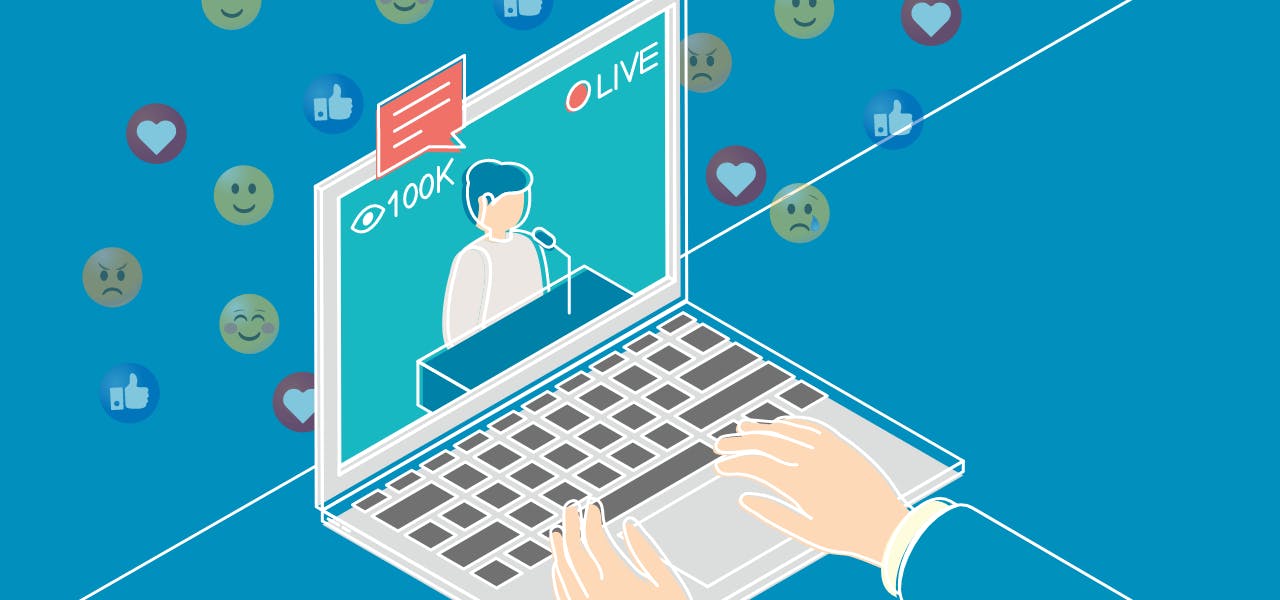Everyone has been impacted in some way by the pandemic of COVID-19. For academic students and scholars, it meant a switch to virtual meetings and lessons as universities attempted to navigate a balance between the safest way of instructing students and the best way for them to learn.
Virtual lessons have evolved into live streaming, where instructors and students engage in real-time as they would have in a classroom setting, but through their devices and in their own chosen environments. As expected, there have been pros and cons to this method of instruction, but as we all learn to adapt to a new era of living, it appears that live streaming is the new alternative to in-person lectures, and it must be utilized to its maximum potential in order to benefit students, teachers, and, ultimately, society.
Benefits and Drawbacks to Making Everything Distance-Based
Whether or not you agree with distance-based learning, the fact is that in many cases, there is no other choice. The COVID-19 pandemic has shown the world that no one is immune to invisible viruses, and many people fear for their safety. It may be a long time before there is a consistent solution to this problem, and in the meantime, distance-based education is the norm in the majority of the world.
There are some benefits and drawbacks to this type of learning, of course. Capitalizing on the advantages and overcoming the disadvantages is the way to a successful interaction that benefits everyone.
When students are able to learn from their own environments, there are many advantages that have made online education a part of society for years already in some form, such as:
● Easier scheduling around their work and other responsibilities
● At-their-pace learning
● More affordable instructional opportunities
● A wider choice of degree paths
Disadvantages have to be addressed, however. Many of these can be taken care of with a more focused lesson plan from the teacher, but others must be the responsibility of the student:
● More distractions and less focus
● An increased sense of isolation in an already secluded time
● Technological issues
● Default lesson plans that are not individualized for the learner
● Limited feedback and engagement
However, live streaming helps to reduce some of these disadvantages and still keep the advantages as a compromise.
Making Your Live Streaming Lecture Successful
When you begin the new journal of learning how to live stream, remind yourself that there’s a really good chance your students are already familiar with this format if you’re in higher education. Between Facebook Live, YouTube, TikTok, and many other social media platforms, businesses and individuals have mastered the methodology of using live streams for their own purposes, and now it’s your turn.
Academic institutions and universities are slowly equipping their teachers with the technology necessary to make live streaming a success in the classroom. VR live streaming, 360-video streaming, and enhanced network connections make live streams a multi-billion viewer engagement. In fact, this market is projected to more than double its $30 billion revenue in 2016 to over $70 billion by 2021. This number hadn’t even taken into account the pandemic, so that $70 billion is likely to be much, much higher.
Students tend to prefer live video streaming to recorded or in-class lesson plans. To make your classroom live successful, use these tips:
● Borrow or invest in the right equipment. There’s nothing like having your WiFi regularly crash to add stress to a lesson.
● Make sure your microphone is high-quality so everyone can hear you, no matter how far you are from your camera.
● Choose your streaming platform. In an academic setting, this might be assigned to you. Check with your data steward to ensure you are following all the protocols for security.
● Tailor your lesson plans to integrate student interaction as much as possible. Let students work together as they would in the classroom. Your streaming platform should encourage cooperative learning.
● Leave time at the end of the session for feedback and questions.
With enough practice, you might begin to enjoy live streaming as a much better, engaging way of teaching instead of recorded video sessions.
Using Impactio to Finalize Your AR or VR Research
Integrating your live lessons and virtual reality with your research in education is a great way to reach a wider audience. When you’re creating your lesson plans or designing a manuscript, you need the right program to put it all together. With Impactio’s all-in-one platform, you get all the tools that you need to turn your research manuscript ideas into reality, no virtual technology necessary!
The idea behind Impactio’s program is to provide every scholar with the necessary steps to get their work published seamlessly all in one place. Impactio makes it simple to input your information, use predesigned layouts to break up your text, and design data-based graphics. With Impactio, there’s no need for virtual technology to get your research article written smoothly and professionally, giving you more time to focus on creating those interactive lesson plans!
